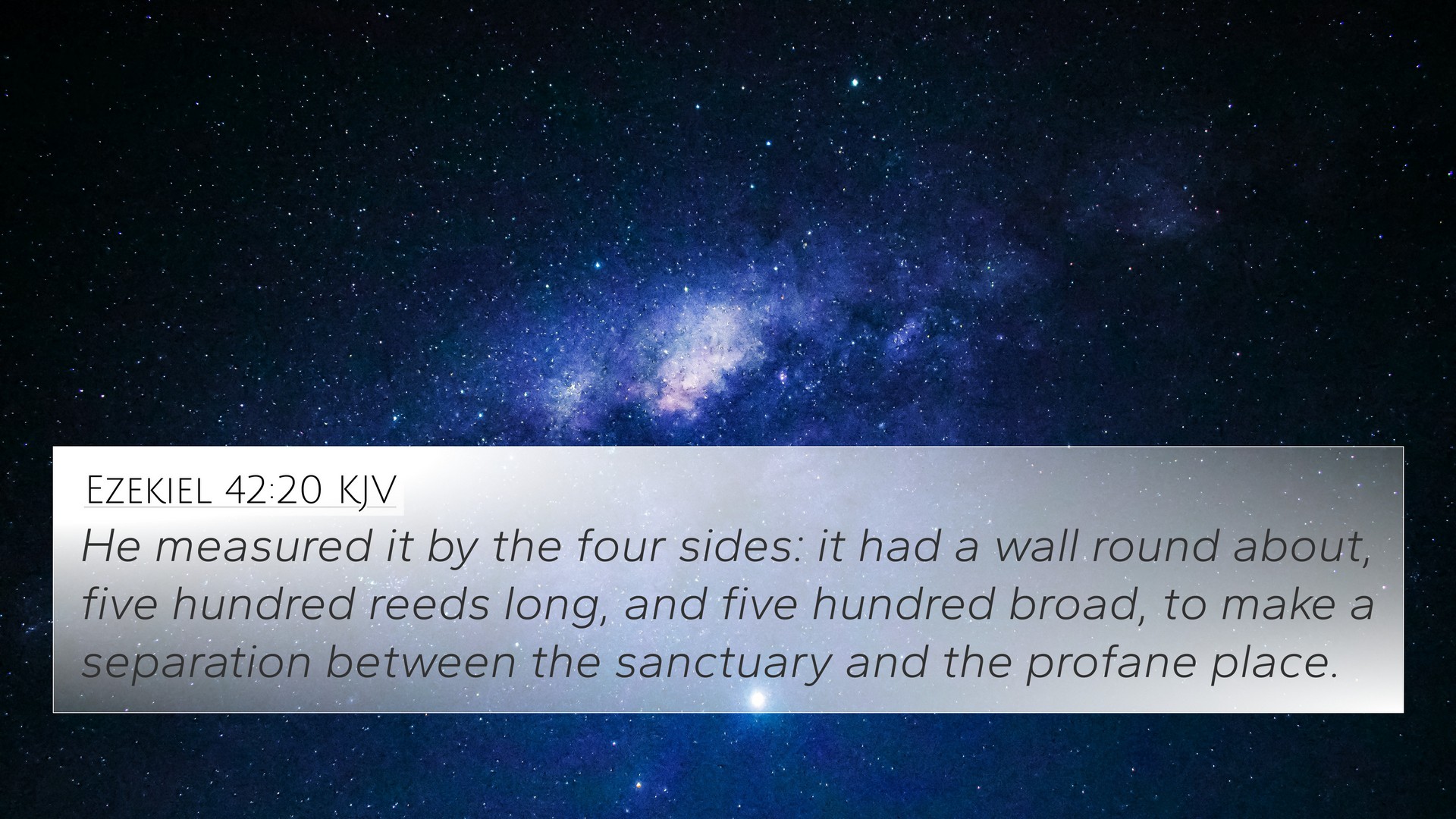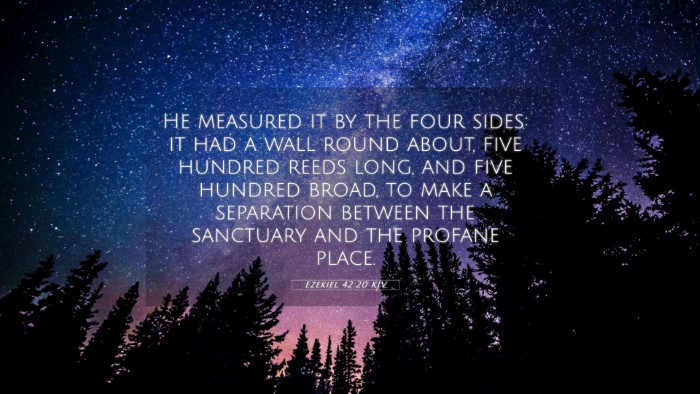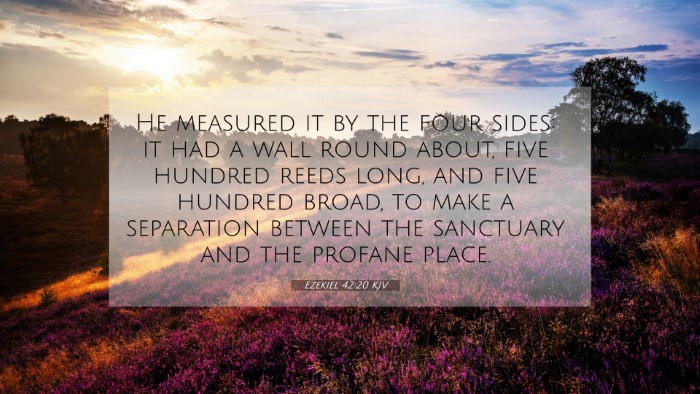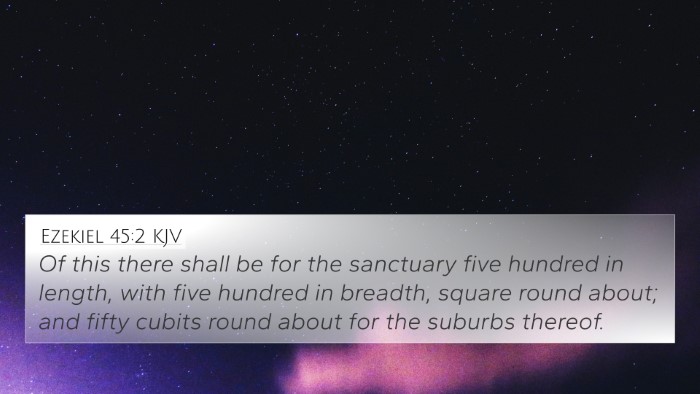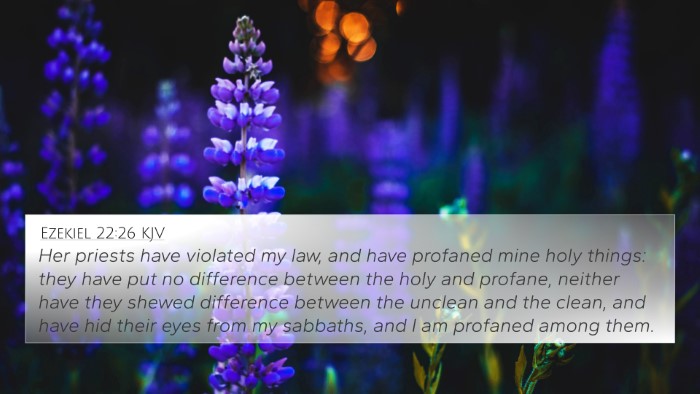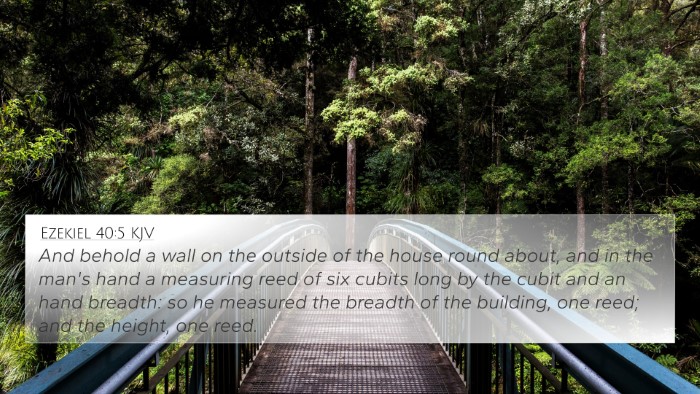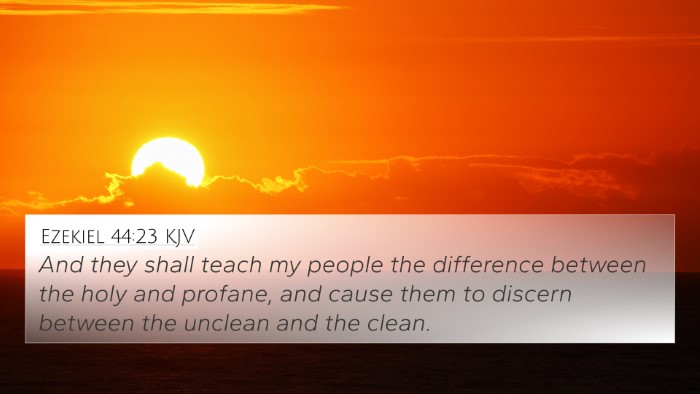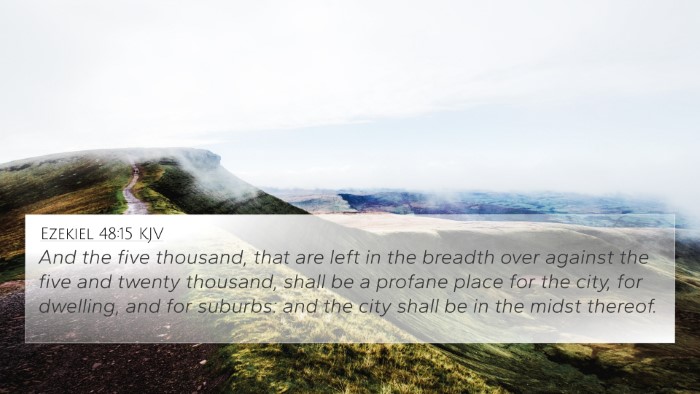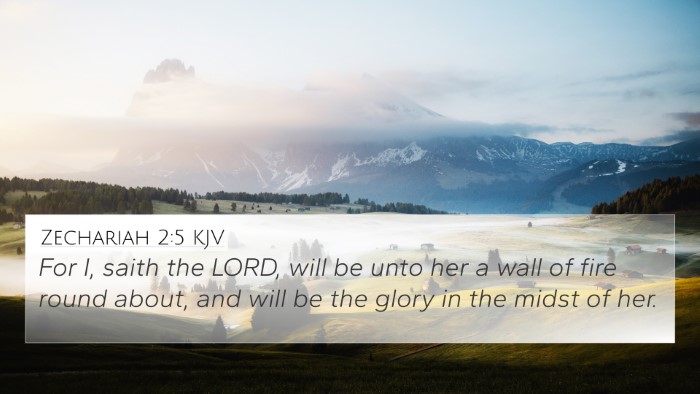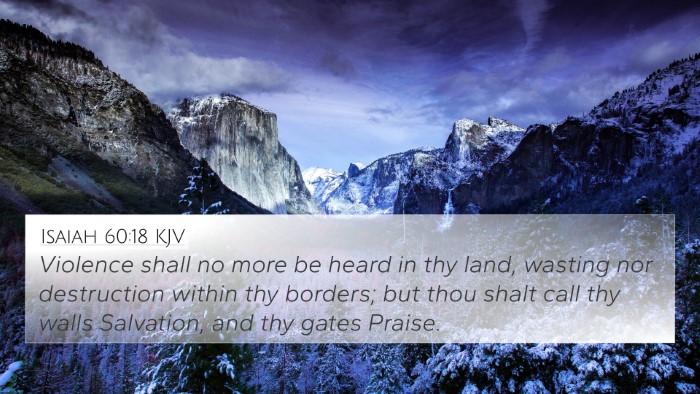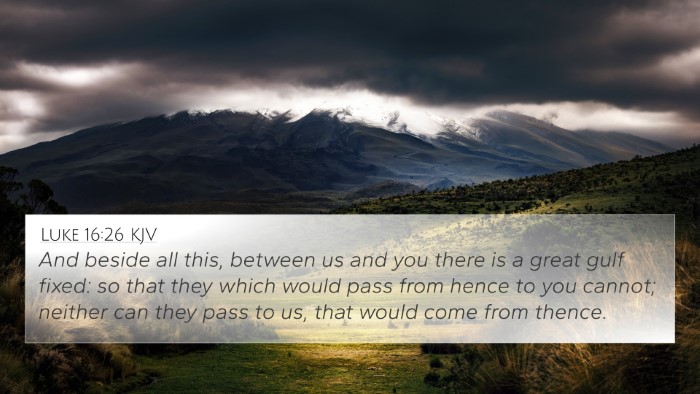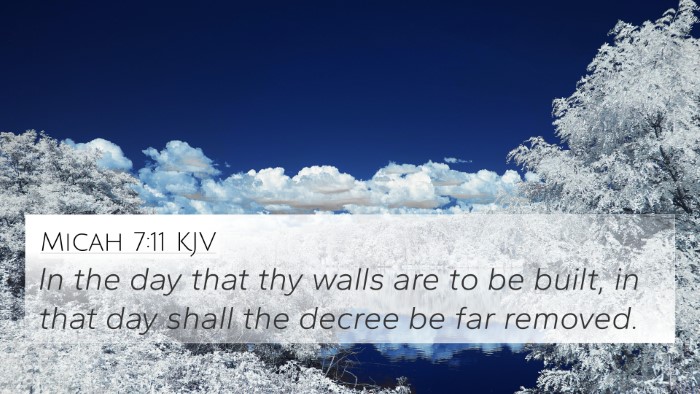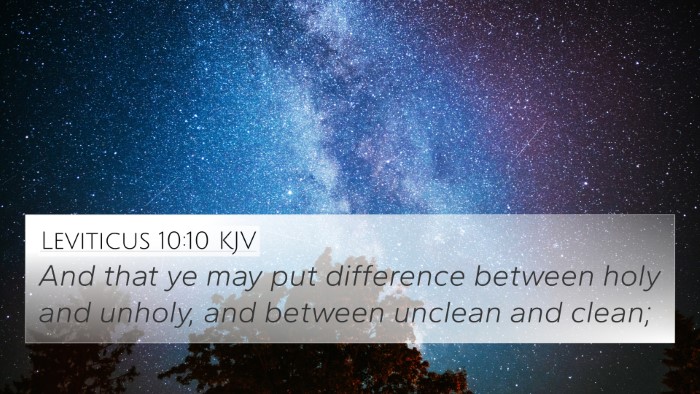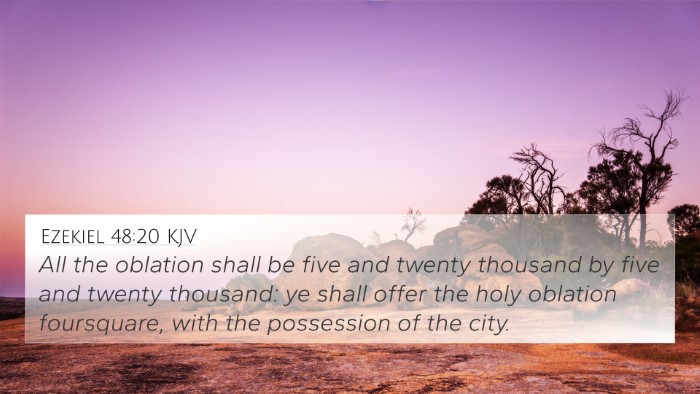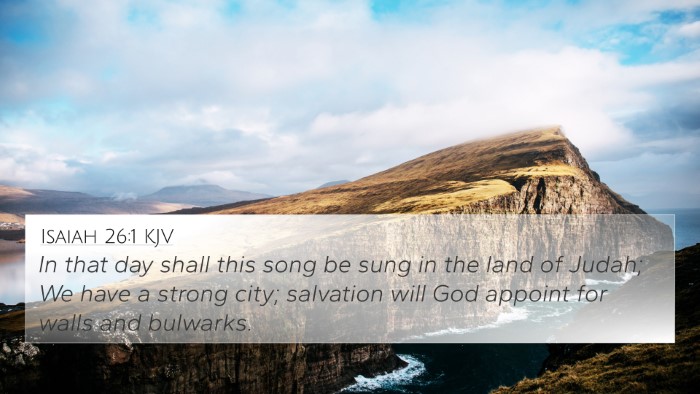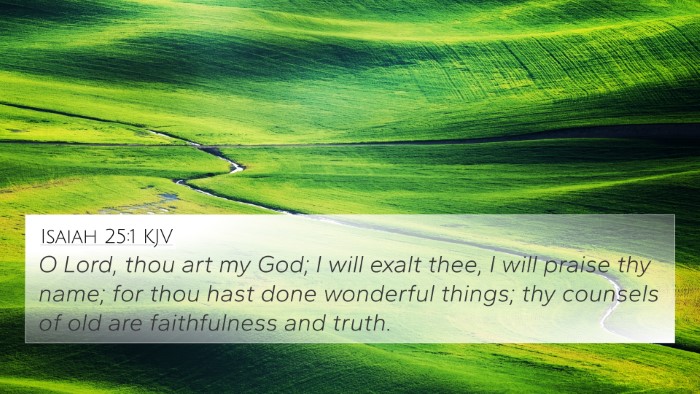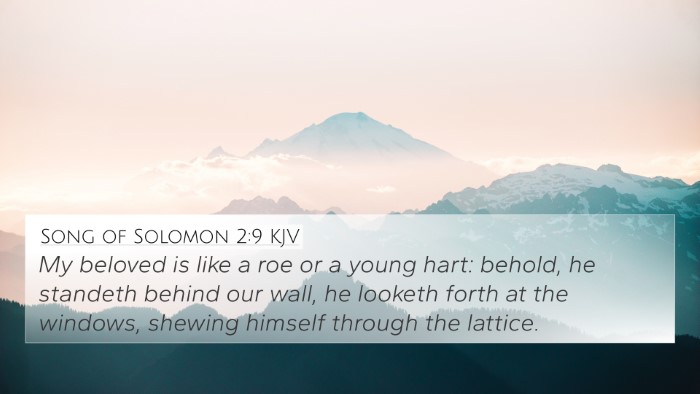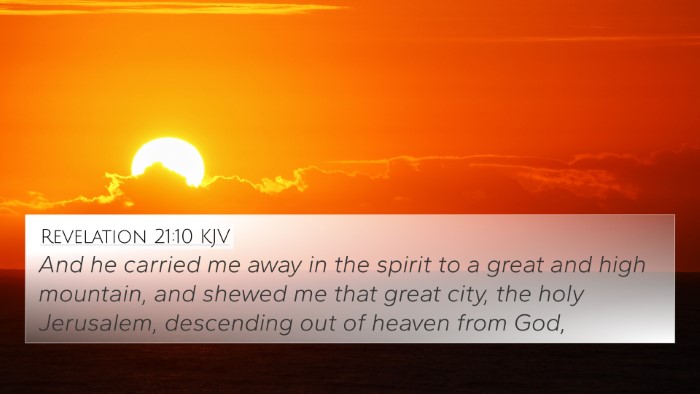Ezekiel 42:20 - Interpretation and Meaning
Ezekiel 42:20 states: “He measured it on the four sides: it had a wall around it, five hundred cubits long and five hundred cubits wide, to separate the holy from the common.” This verse is pivotal in understanding the divine distinction between the sacred and the profane in the context of the Temple's measurements and its implications for worship. Below is a comprehensive analysis and interpretation based on various public domain commentaries.
Summary of Insights
The measurement described in Ezekiel 42:20 emphasizes the significance of boundaries that God has established between what is holy and that which is common. The walls serve as a protective barrier, emphasizing the sanctity of the space designated for God's presence and worship.
Key Themes and Analysis
- Holiness and Separation: Matthew Henry emphasizes that the delineation represents God's holiness and the need for separation from sin and the secular world.
- The Nature of God's House: Albert Barnes discusses the importance of understanding the Temple not just as a physical structure but as a symbol of God's presence among His people.
- Divine Dimensions: Adam Clarke notes the measurement 500 cubits as significant, symbolizing completeness and divine order, reflecting God's perfection in design.
- Worship and Reverence: The commentary by Matthew Henry stresses the necessity for reverence in worship, which is evident in the strict boundaries around the Temple.
- God's Sovereignty: Clarke points out that these dimensions illustrate God's sovereignty in dictating how worship should be conducted.
Cross-References Related to Ezekiel 42:20
Understanding the connections of Ezekiel 42:20 with other passages enriches the interpretation and reveals a broader theme of divine distinction and worship. Here are some notable cross-references:
- Leviticus 10:10: "And that you may put difference between holy and unholy, and between unclean and clean."
- Revelation 21:27: "But there shall by no means enter it anything that defiles, or causes an abomination or a lie, but only those who are written in the Lamb's Book of Life."
- Hebrews 12:14: "Pursue peace with all people, and holiness, without which no one will see the Lord."
- Isaiah 35:8: "A highway shall be there, and a road, and it shall be called the Highway of Holiness..."
- 1 Peter 1:16: "Because it is written, 'Be holy, for I am holy.'
- Ephesians 2:19-22: This passage discusses how believers are fellow citizens with the saints and members of the household of God, emphasizing a communal aspect of holiness.
- Exodus 29:37: God commands that the altar be consecrated, illustrating the importance of sanctification.
- Psalms 15:1: "Lord, who may dwell in your sacred tent? Who may live on your holy mountain?" identifies the criteria of holiness needed to be in God’s presence.
- Isaiah 52:1: "Awake, awake! Put on your strength, O Zion; Put on your beautiful garments, O Jerusalem, the holy city..." which discusses the holiness of God’s chosen people.
- Numbers 10:10: “Also in the day of your gladness, and in your appointed feasts, and at the beginnings of your months, you shall blow the trumpets over your burnt offerings and over the sacrifices of your peace offerings...” which highlights the importance of sacred gatherings.
Tools for Bible Cross-Referencing
For those looking to dive deeper into the connections between biblical texts, consider these tools:
- Bible Concordance: A systematic listing of words or phrases in the Bible that allows users to find verses.
- Bible Cross-Reference Guide: Guides that provide a compilation of scripture connections for various themes.
- Cross-Reference Bible Study: Methods and approaches for studying the Bible that rely on the interconnection of scriptures.
- How to Use Bible Cross-References: Resources that teach how to identify and utilize cross-references effectively.
- Bible Reference Resources: Various materials including reference books and online databases for deeper study.
Conclusion
Ezekiel 42:20 serves as a profound reminder of God’s holiness and the need for believers to recognize the difference between sacred and secular. Through the use of cross-references, individuals can locate related scriptures, enhancing their study and understanding of God’s Word. Establishing these connections provides guidance in the pursuit of holiness and deepens the worship experience.
Engaging with this verse and its commentary can inspire a greater appreciation for the divine order that God has established and encourage believers to maintain their reverence in all aspects of their spiritual journey.
Exploring the connections between the Old and New Testaments, as showcased in this analysis, can also shed light on the comprehensive narrative of God’s plan for humanity. In this way, Ezekiel 42:20 is not only a distinct verse regarding worship but part of a larger inter-Biblical dialogue that invites reflection and understanding.
